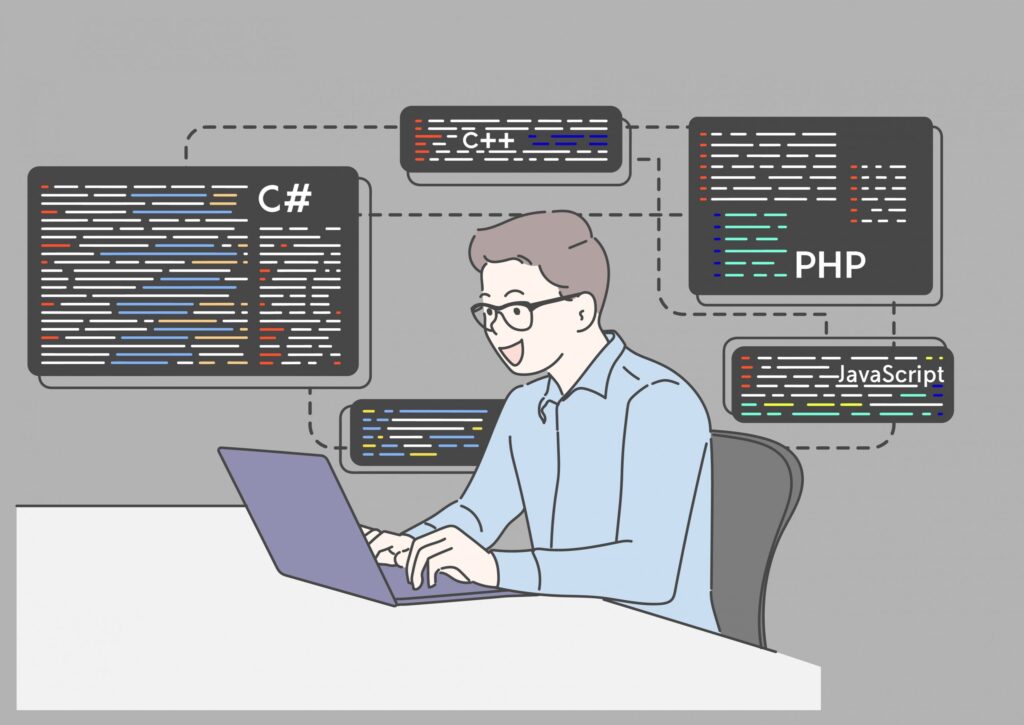When it comes to which server software is best for your business, there are a few things to consider. Your budget may be the first factor, but you should also look at what type of applications and services you will need to run on your server. Additionally, the scalability of the application and the performance of your hardware should also be taken into account.
Java is the best platform for software development for both Mac and Windows. It has a large community of developers and supports multiple platforms, making it easy to learn and use. Additionally, Java offers cross-platform compatibility so that you can easily transfer your code from one system to another.
Introduction – The Best Platform For Software Development

Software development is the process of creating, maintaining, and supporting software applications. It involves building, testing, and deploying software products, as well as developing the underlying systems that make them run. Choosing the right platform for your software project can determine its success or failure. With the right platform, you can reduce development costs and time, enhance the quality of your product, and improve customer satisfaction. In this article, we will discuss the best software development platforms and how to choose the right one for your project.
13 The Best Platform For Software Development Analysed
1. Cloud Platforms
Cloud computing is one of the most popular and reliable ways to develop software. It allows developers to create applications without having to worry about hardware, operating systems, and other technical details. The most popular cloud platforms include Amazon Web Services (AWS), Microsoft Azure, Google Cloud Platform, IBM Cloud, Oracle, and Cloud Foundry.
- AWS is the world leader in offering cloud application development with over 55% of developers using it. It offers a wide range of services and features that make it a great choice for developers. It is also the most reliable cloud platform with an uptime of 99.99%.
- Microsoft Azure is another popular cloud platform that provides a range of services and features for developers. It is highly scalable and offers advanced analytics and machine learning capabilities.
- Google Cloud Platform (GCP) is a great option for developers who are looking for scalability and reliability. It also offers robust security features that make it a secure option for developing applications.
- IBM Cloud is an enterprise-level cloud platform that offers a variety of services such as cognitive computing, analytics, and blockchain.
- Oracle Cloud is the famous database software giant’s cloud computing platform. It offers PaaS (Platform-as-a-Service), DaaS (Data-as-a-Service), and SaaS (Software-as-a-Service).
- Cloud Foundry is another cloud computing platform for developing web applications that would fall under the

2. Cross-Platform Development Tools
Cross-platform development tools are essential for businesses that need to reach a wide range of users who may be using different devices and operating systems. These tools enable developers to create apps that can be used on multiple platforms and devices with minimal code changes. Some of the most popular cross-platform development tools include Flutter, Back4App, React Native, Xamarin, and PhoneGap.
- Flutter is a free, open-source UI software development kit for creating cross-platform applications. It was created by Google and is known for its fast development cycles and high performance. The framework uses the Dart programming language, which is easy to learn and provides access to a wide range of libraries.
- Back4App is a cloud-based mobile application development platform that enables developers to create apps using Node.js and JavaScript. It provides an intuitive user interface and comprehensive analytics and reporting features.
- React Native is an open-source framework for building native mobile applications using JavaScript. It allows developers to create applications with a single codebase, making it easier to maintain and update applications across multiple platforms.
- Xamarin is an open-source cross-platform tool for building modern responsive iOS, Android and Windows applications. It’s mainly used by enterprise developers who need robust support for their projects.
- PhoneGap is a free open-source platform that enables developers to create mobile applications using HTML, CSS, and JavaScript. It’s well-suited for developing apps with simple.
3. Web Frameworks
Web frameworks are the backbone of any software development project, providing structure and organization to the development process. Web frameworks enable developers to quickly create highly functional and secure websites and applications. Popular web frameworks include Ruby on Rails, Angular, ASP.NET, Laravel, Meteor, Express, and Spring. Each framework has its strengths and weaknesses, so it is important to research which one is the best fit for your project.
When selecting a web framework, consider the language support and performance offered by the framework. For example, Ruby on Rails is known for its speed and scalability while Spring offers robust support for Java-based development. It is also important to consider the security and compliance requirements of your project as well as the cost factors associated with the framework.
Finally, look for a framework that offers easy-to-use tools for data storage, mobile development, DevOps automation, testing services, analytics and monitoring solutions. Look for a framework that offers comprehensive support and documentation so you can easily get up to speed with the technology.
4. Application Lifecycle Management Services
Application Lifecycle Management (ALM) services help you manage every stage of the software development process, from planning and design to deployment, maintenance, and support. These services provide an organized way to track progress and make sure all your teams are working together efficiently.
When looking for an ALM service, consider what features are most important to you. Some of the most popular ALM services offer features such as project tracking, version control, bug tracking, feature management, and release schedules. Many ALM services also offer collaboration tools such as chat platforms, task management systems, and document-sharing tools.
Another important factor to consider when selecting an ALM service is its integration capabilities. Most ALM services have integration capabilities that allow them to work with other platforms and tools. This makes it easy to integrate the ALM service into your existing workflow and keeps all your teams working together efficiently.
Finally, look for an ALM service that offers security features such as encryption and authentication. Many ALM services also offer scalability options so you can grow your development team without worrying about performance issues. These features are essential for ensuring the security and reliability of your project.

5. Language Support and Performance Considerations
When it comes to software development, language support and performance are key considerations. Different languages are suited for different tasks, so you’ll want to choose the language that best meets your requirements. Popular languages for software development include Python, JavaScript, Java, C#, and Go.
Python is powerful and versatile, making it a popular choice for developing web applications and data-driven solutions. It’s also widely used for machine learning and artificial intelligence projects. JavaScript is another popular option for front-end web development and mobile app development. Java is well-suited for enterprise applications and big data projects. C# is the language of choice for Windows applications. And Go is a great choice for developing fast, reliable, and secure applications.
In addition to language support, you’ll also want to consider the performance of your chosen platform. Look for features like automated scaling, load balancing, and caching to help ensure that your application runs quickly and smoothly. Consider the type of infrastructure you’ll need as well – will you need cloud servers or dedicated hardware? Will you need to use container technology?
Finally, consider the security of your chosen platform. Does it offer built-in security features? Are there options for two-factor authentication and encryption? Make sure the platform you choose can meet your security needs.
6. Security and Compliance Requirements
When it comes to software development, security and compliance requirements should always be taken into consideration. These days, many businesses are subject to stringent regulations, so it’s important to make sure your development platform meets any necessary criteria.
One of the easiest ways to ensure that your platform is compliant is to look for certifications. For example, ISO/IEC 27001 is an internationally accepted standard for information security management systems. If your platform is certified for ISO/IEC 27001, you can rest assured that it meets the highest standards for security and compliance.
Other certifications to look out for include SOC 1 (for financial services), HIPAA (for healthcare services), and PCI-DSS (for e-commerce transactions). Your development platform should also have built-in features that allow you to control access, encrypt data, and comply with GDPR requirements.
Finally, you should also consider using a third-party security and compliance tool such as Snyk to help you identify and address any potential security issues in your code. This way, you can ensure that your development platform meets all of the necessary security and compliance requirements.
7. Cost Factors

When it comes to software development, cost is an important factor to consider. How much you spend on your project will depend on the project’s complexity, the technology being used, and the number of developers involved. The cost of creating custom software ranges between $120,000 to $220,000. This figure is not residual, because the cost is constantly increasing due to innovations in technology and software development techniques.
CMS software development costs: from $20,000 to $50,000 for a basic platform with design, a few custom features, configuration, integration, and testing.
The cost of developing a custom software solution depends on several factors such as the scope of the project, the technologies used, and the number of developers involved. To ensure you get the best value for money, it’s important to understand how software development cost is calculated and what services are included. Generally speaking, there are two pricing models: hourly and fixed-price. For hourly projects, you pay for the hours worked by each developer. For fixed-price projects, you pay for the entire project upfront.
It’s also worth noting that there are additional costs associated with software development such as hosting fees and ongoing maintenance costs. These should be factored into your budget when considering the overall cost of your project.
8. Ease of Use and Support
When it comes to choosing the best platform for software development, ease of use and support should be at the top of the list. After all, developers want to be able to quickly and easily build applications that are efficient and reliable. This is why platforms such as Quixey, NetBeans, Collaborator, Codenvy, and GitHub offer excellent levels of user-friendliness. Quixey even provides a completely visual and easy-to-use No-Code Application Development Platform.
NetBeans is a cross-platform development tool compatible with different operating systems, like Linux, Solaris, Windows, and macOS. It can be used to develop applications in a wide range of languages, including Java, C/C++, HTML5, and more. Collaborator is a peer code and document review tool for development teams that take advantage of GitHub’s integrated version control system. Codenvy is a cloud development environment that can be used for application coding and debugging and sharing projects in public or private repositories. Finally, GitHub serves in the form of the GIT repository hosting service. Developers can use this platform to store code snippets, collaborate on projects, and even manage web applications.
No matter which software development platform you choose, ease of use and support should be a top priority. With these factors in mind, you can find the best platform for your needs.
9. Data Storage Solutions
When it comes to data storage solutions, there are several different options available. The most popular solution is cloud storage, which is a scalable and cost-effective solution that can be used to store data securely. The Amazon Simple Storage Service (S3) offers an object storage solution while IBM Cloud Object Storage provides an endpoint backup and Infrastructure-as-a-Service (IaaS) solution. For those looking for on-premise storage solutions, Hitachi Vantara offers a highly reliable Hitachi HNAS platform. Additionally, Scality provides enterprise cloud solutions for file storage and free object storage. Finally, Firebase is a Google mobile platform that offers data storage solutions for developers.
No matter which data storage solution you choose, it is important to consider the cost factors, language support and performance, security and compliance requirements, ease of use and support, and other factors like mobile development, DevOps tools for automation, testing services for quality assurance, analytics and monitoring tools.
10. Mobile Development Solutions

Mobile applications are becoming increasingly important for businesses of all sizes, and selecting the right mobile development platform can help ensure that your app meets the needs of your users. There are a variety of mobile development solutions available, so choosing the best platform for your project can be a challenge.
One of the most popular mobile development solutions is Appery.io, which is a cloud-based rapid enterprise mobile app development environment with integrated backend services. It provides a simple drag-and-drop interface to easily build user-friendly apps, and it supports both Android and iOS. It also offers a wide range of features such as push notifications, analytics, and integration with third-party services.
Another popular mobile development solution is Thunkable, which is specifically designed for those without technical knowledge who are looking to build a mobile app. It offers a code-free platform with drag-and-drop tools to create apps quickly and easily and supports both Android and iOS platforms. It also provides access to a library of components to help you build more advanced apps.
For businesses looking for a comprehensive mobile development platform, AppInstitute is an excellent option. This software is free to use and helps you quickly build a mobile app that meets your business needs. It also provides features such as analytics, push notifications, and integration with third-party services.
Finally, Xamarin is another popular mobile app development framework, which is. Net-based and introduced by Microsoft. It
11. DevOps Tools for Automation
DevOps tools for automation provide teams with the ability to streamline their software development process. These tools help to automate common tasks such as building, testing, releasing and deploying applications. By using these tools, teams can reduce the time it takes to develop and deploy applications and increase the quality of the applications they produce.
One of the most popular DevOps tools for automation is Jenkins, an open-source platform that can be used to automate software development processes. Jenkins provides users with a wide range of plugins that can be used to create custom pipelines, as well as providing a comprehensive set of webhooks and APIs. Jenkins also provides users with a user-friendly UI that makes it easy to configure pipelines and monitor their progress.
Another popular DevOps tool for automation is Ansible, an open-source IT automation engine. Ansible provides users with a simple automation language that allows them to define their infrastructure as code. Ansible also provides users with an intuitive UI that makes it easy to write playbooks and manage their deployments.
Other popular DevOps tools for automation include Puppet, Chef, and SaltStack. Puppet is an open-source IT automation system that enables users to define their infrastructure as code. Chef is an open-source configuration management tool that provides users with a simple automation language for describing systems. SaltStack is an open-source configuration management tool that provides users with a powerful automation language for describing systems.
12. Testing Services for Quality Assurance

When it comes to software development, testing is a critical part of the process. Quality assurance services are used to ensure that the software is functioning correctly and meets the established requirements and standards.
Testing services provide the necessary feedback needed to identify any issues or defects in the software before it is released. This helps reduce costs associated with rework and bug fixes, as well as ensure customer satisfaction with the product.
The most common types of testing services include functional, performance, security, usability, compatibility, scalability, and regression testing. These tests are carried out using manual or automated processes depending on the complexity of the application and the desired results. Automated testing tools can be used to run tests quickly and efficiently, allowing for a more thorough testing process. Testing services often include other services such as load testing, stress testing, and test automation to ensure that applications are ready for production.
When selecting a testing service provider, it is important to consider their experience in providing quality assurance services. It is also important to ensure that they have adequate resources and expertise in the specific software development platform you are using. A good testing services provider should have experience in both manual and automated testing processes and a comprehensive understanding of the different types of tests. Additionally, they should be able to provide detailed reports on their findings and offer recommendations on how to improve your application.
13. Analytics and Monitoring Solutions
Analytics and monitoring solutions are key components of any successful software development project. With the right data, developers can identify potential problems before they become issues, optimize performance and make informed decisions about how to improve their product. Analytics and monitoring solutions come in a variety of forms, including both open-source and commercial options.
Popular analytics and monitoring solutions include AppDynamics, New Relic, Tableau Big Data Analytics, Sematext, Prometheus, and Datadog. AppDynamics is part of Cisco and is a full-stack observability platform that incorporates extensive APM capabilities.
New Relic offers a SaaS Software Analytics Platform that offers Application Performance Monitoring and Real User Monitoring for Cloud and other environments. Tableau Big Data Analytics is an excellent business analyst software that offers dynamic and cutting-edge capabilities.
Sematext monitoring enables end-to-end monitoring of applications and infrastructure. Prometheus is an open-source cloud-native monitoring solution for gathering and analyzing time-series data. Finally, Datadog is a SaaS-based data analytics platform for monitoring servers, applications, databases, tools and services.
When choosing the right analytics and monitoring solutions for your project, consider factors such as language support, security and compliance requirements, cost factors, ease of use, data storage solutions and mobile development solutions. It is also important to consider DevOps tools for automation, testing services for quality assurance, and analytics and monitoring solutions to ensure you have the data.

Conclusion
In conclusion, there is no one-size-fits-all solution when it comes to software development platforms. The best platform for your business depends on many factors, such as the type of projects you need to develop, the languages you need to use, the performance and security requirements, the cost of development, and the ease of use.
When choosing a software development platform, consider the type of projects you will be developing, the language support and performance requirements, security and compliance needs, cost factors, ease of use and support, data storage solutions, mobile development solutions, DevOps tools for automation, testing services for quality assurance, analytics and monitoring solutions. All these considerations can help you find the best platform for your business.

